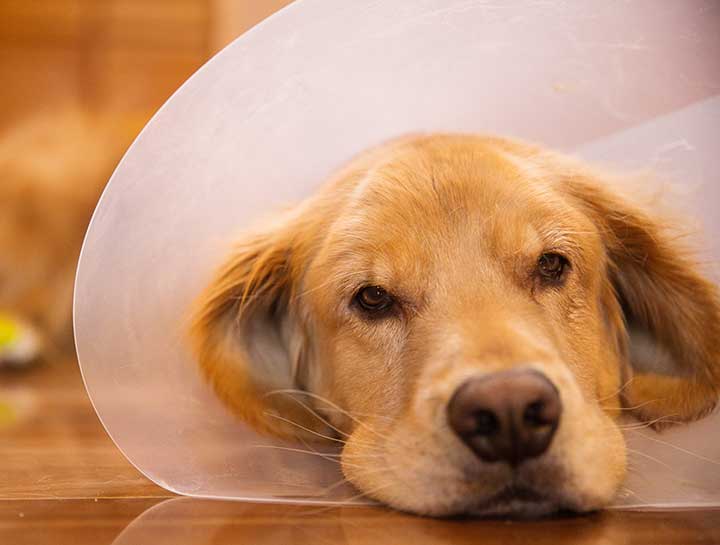Caring for Your Pet After Surgery

Caring for your pet after surgery
Just like humans, recovery after surgery can be an uncomfortable experience for our pets. Therefore it is up to you and your family at home, to aid them in their recovery by making sure they are warm and comfortable, and by observing the following points.
To ensure full comfort during surgery your pet has been given a general anesthetic and/or sedative. They may have also been given pain relief to aid any soreness after surgery.
The anesthetic was administered through an intravenous injection in the front leg (you may notice a clipped area on the foreleg) and/or by gas through a special tube in the windpipe. Occasionally this tube causes some irritation, which results in a mild cough following surgery. This usually clears up within 24 hours. If coughing and irritation continues please contact Grace Animal Hospital.
Your pet seems very sleepy, is this normal?
The general anesthetic and/or sedative can take a number of hours to wear off and in some cases can cause patients to appear drowsy for a day or so. Over the next day or two their behavior should return to normal.
Can you feed your pet tonight?
Your pet may feel a bit nauseous after surgery and sometimes eating can cause vomiting. However, if you notice he/she is up and about in search of food, a small amount may be offered unless indicated otherwise by your veterinarian. Ensure there is enough water to drink and meals can be returned to normal the day after surgery unless specified by your veterinarian.
What should you do if your pet licks or chews the stitches?
If your pet has stitches they may chew or lick them causing harm and in some cases infection. If your pet shows an interest in the wound we recommend Elizabethan collars to deter licking.
Caring for your pet's wound
During the post operative period (approx. 10-14 days after surgery) check the wound twice a day to ensure it is clean and dry. Also check for any signs of swelling, heat, odor, discharge, skin irritation, gaping or self-inflicted damage.
Should your pet require a bandage, do not let it get wet or soiled with dirt. If your pet needs to go outside at anytime, cover the bandage with a plastic bag and secure it in place with tape.
If your veterinarian has inserted a drain into the surgery site, you may notice some discharge and drainage over the next few days. This is normal and has been placed to encourage the movement of fluid away from the surgery site. To prevent the drain from clogging it is a good idea to clean the drain twice a day with warm, slightly salty water – do not use soap.
Something's not right, what should you do?
If you have any doubt about the health of your pet following surgery, please contact our hospital immediately to speak to one of our healthcare team.
In the event of an out of hours emergency, please visit our link to Emergency/critical care.
Signs you may see that can indicate problems
- Lethargy - particularly after 24 hours
- Vomiting – particularly after 24 hours
- Excessive redness around the surgery site
- Swelling around the surgery site
- Bleeding from the wound
- Discharge from the wound
Caring for your pet at home
If applicable, we will provide you with instructions on feeding, drinking and activity levels for your pet. We will also provide you with information on when to make an appointment for follow up care such as having any stitches, drains and bandages removed.
